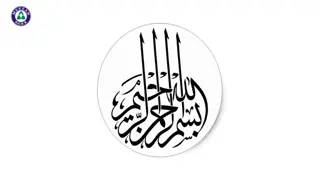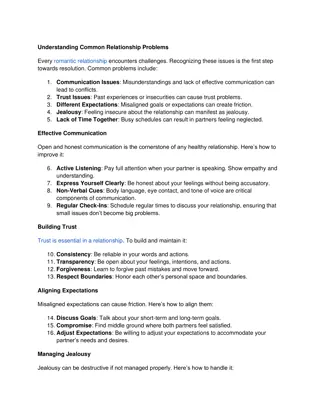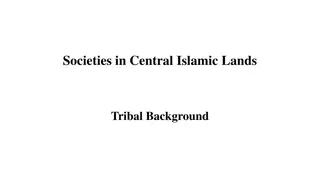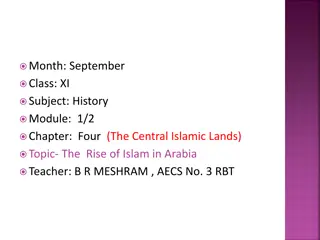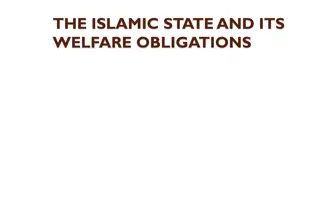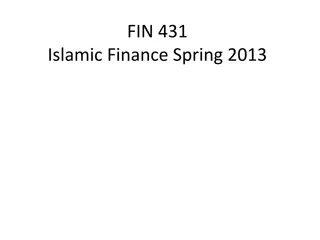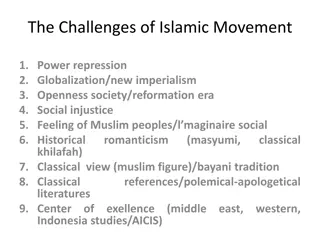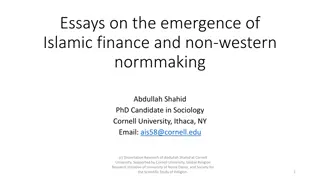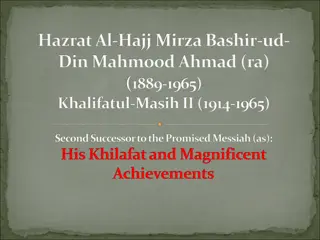Unpacking the Islamic Significance of Hajj Through Historical Context
Explore the Islamic nature of the Hajj pilgrimage by delving into its origins, key sites like the Kaaba, and the actions performed at places such as Mina, Arafat, and Muzdalifah. Understand the role and significance of Hajj in Islam through a discussion on its connection to Muhammad, pre-Islamic elements linked to the legend of Ibrahim, and debates on the Islamic nature of the pilgrimage.
Download Presentation

Please find below an Image/Link to download the presentation.
The content on the website is provided AS IS for your information and personal use only. It may not be sold, licensed, or shared on other websites without obtaining consent from the author. Download presentation by click this link. If you encounter any issues during the download, it is possible that the publisher has removed the file from their server.
E N D
Presentation Transcript
Big Ideas for RE KS4 Curriculum Islam Practices (AQA a) Created in 2019. Project funded by
1: 1: How Islamic is the Hajj? How Islamic is the Hajj? From the spec origins, actions performed at sites including the Ka aba at Makkah, Mina, Arafat, Muzdalifah and their significance. Hajj: role and significance including BIG IDEAS LEARNING CONTEXT: historical context of the Hajj PHILOSOPHY: discussion of what makes Hajj Islamic Learning outcomes: Explain Muhammad s connection to the Hajj Explain at least two pre-Islamic elements of Hajj from the legend of Ibrahim Express a justified view as to how Islamic the Hajj is Resources 1 Ibrahim Adam (Islam beliefs lesson 1) 1 Hajj before Islam 1 Hajj: a history
Lesson 1 Starter: show a Christmas tree- discuss if it is religious? what makes it religious? (Christianity Practices lesson 9). Show religious ethical teachings (SLIDE). Are these passages religious? What makes them religious? Brainstorm information about Ibrahim. Recap Ibrahim (using Islam Beliefs 1 Ibrahim Adam ). Cut up 1 Hajj before Islam into a card sort. Students connect elements of the Ibrahim legend with modern Hajj (answers on slide). Define the phrase pre-Islamic . These are pre-Islamic elements of Hajj, meaning their origin lies before the life of Muhammad and the Muslim community. Read the paragraph Guardians of the Hajj on resource 1 Hajj: a History to find out about Muhammad s connection to the Hajj. Highlight lines describing the placing of stones. Discuss whether, because this is a Semitic (Middle-Eastern, including Jews) practice, rather than a strictly Arabic practice, it is pre-Islamic or even non-Islamic ? Collect arguments on the board as students discuss. Focus on Muhammad s connection to the Hajj. Ask students to underline what they think is the most important element that links Muhammad to the Hajj. Listen to answers. Discuss what makes Hajj religious, and what makes it Islamic. Collect arguments. Read the Hajj traditions and hajj logistics paragraphs. Discuss if this information makes the Hajj Islamic. Collect arguments. Debate and answer the question: how Islamic is the Hajj? Groups must use at least two arguments already articulated (or new arguments). Answer the question in notes in no more than 20 words.
Hajj before Islam As she ran between the stones of Safa and Marwa, Hajar noticed Ismail poking at the ground. This was the spot where the angel Jibril s wing had touched. There the spring of Zam Zam appeared and saved them. Jibril revealed a black stone to Ibrahim. Ibrahim asked his son Ismail to lay the stone as a sign of devotion to God. This is the black stone of the Ka aba. Feast of sacrifice Muslims remember Ibrahim s willingness to sacrifice his son Ismail on God s command. He showed perfect obedience to God Ibrahim s wife and son, Hajar and Ismail, were alone in the desert. Desperate for water, Hajar ran seven times between the stones of Safa and Marwa.




